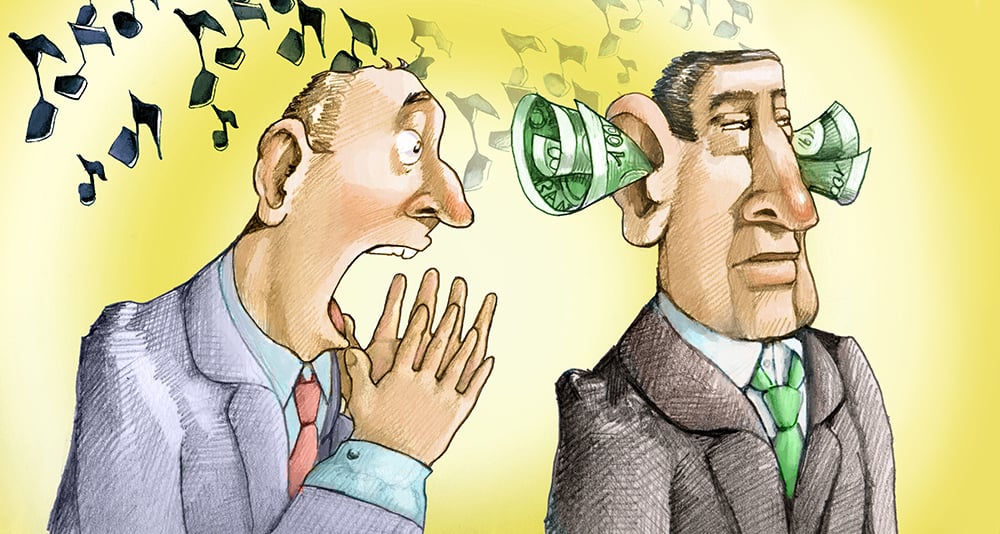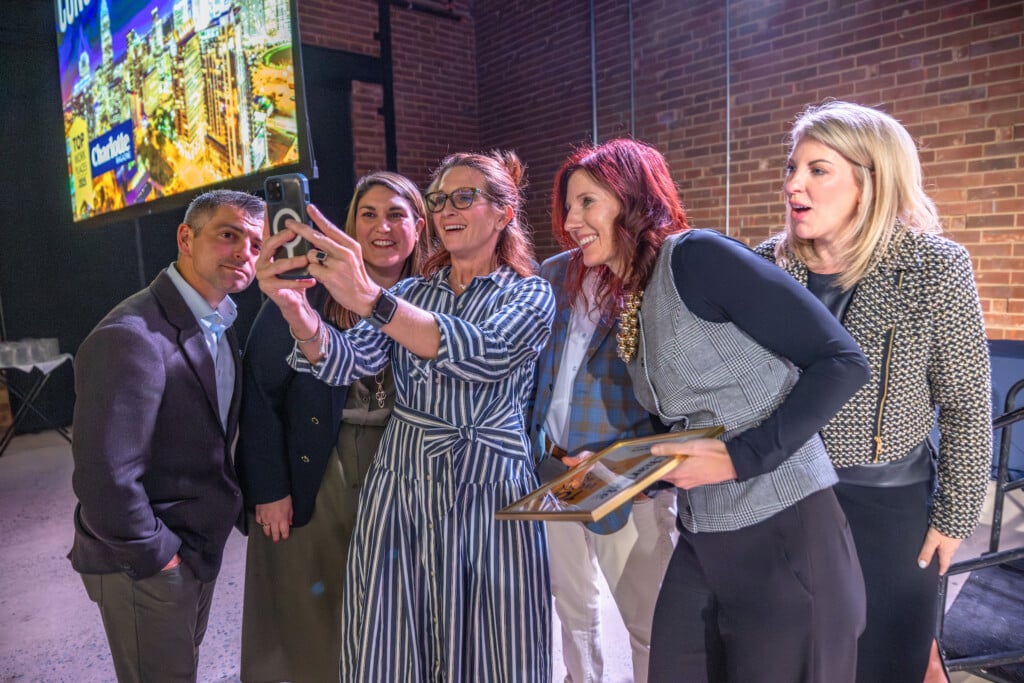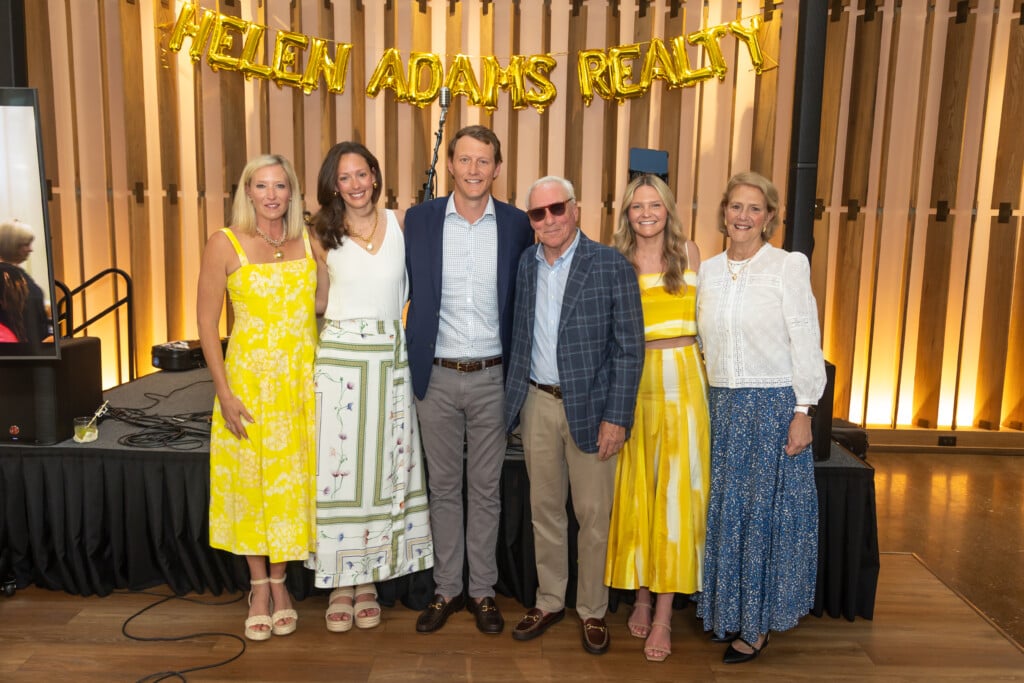Charlotte Public Media Charts An Uncertain Future
Here’s how Trump Administration cuts will land on Charlotte’s public radio and TV stations

The people who run the Charlotte area’s public media outlets know that for the next two years, listeners and viewers can expect less: Less local reporting, less local programming, less ability to react quickly to fast-changing events, and less capacity to promote and enhance community events.
What they didn’t know, at least as of early September, was where those reductions would be felt most or the precise shape they’d take. In late July, President Trump signed into law a “rescissions bill” that cancelled $9 billion in budgeted foreign aid and funding for public broadcasting through the 2027 fiscal year. The bill yanked back $1.1 billion from the Corporation for Public Broadcasting, the 58-year-old nonprofit that distributes federal support to NPR and PBS member stations. In response, the CPB announced that it would cease operations.
The Charlotte area has two radio stations that, to this point, have received annual federal money through the CPB: WFAE, an NPR affiliate with a news and information format; and WDAV, a Davidson-based classical music station licensed to Davidson College. It also has a PBS television affiliate, WTVI, which produces local shows and airs national news and entertainment programs.
It appeared at press time that the cuts wouldn’t lead to extensive programming changes; for the most part, if you’re a regular listener or viewer, you’ll hear and see what you heard and saw before—for now, at least. But public outlets have to fill sudden funding gaps and find ways to raise more money themselves rather than rely on CPB grants. Those losses will erode stations’ ability to function in ways the public might not perceive.
“There is a whole arts ecosystem that we’re a part of that’s going to be affected by this, and the ripple effect is going to run through it,” says Frank Dominguez, the general manager at WDAV, who’s worked at the station since 1994. He says the loss of federal funding will force WDAV to cut about $250,000 from its planned $2.3 million budget for the 2026 fiscal year.
“That’s money that we can’t bank on now and that we have to either raise elsewhere or or find savings in expenses to make up the difference, and most likely a combination of the two,” Dominguez says. “That much money, for a station like ours, isn’t easy to replace in a single year. We try to build the amount that we fundraise each year bit by bit, and we’ve been really successful in getting to the point where we raise $2.3 million every year. But now, to have to raise a quarter of a million of that on our own rather than getting it from the grant that we’ve been counting on all these years, is going to be a challenge, and I doubt that it’ll be able to be met in a single year.”
The administration’s cuts are explicitly political. Stripping the CPB’s federal funding over alleged left-wing bias has long been a Republican goal, and Trump made no secret of his motive: The news release that accompanied his May 1 executive order was titled, “Ending Taxpayer Subsidization of Biased Media.”
“Unlike in 1967, when the CPB was established, today the media landscape is filled with abundant, diverse, and innovative news options,” the release reads. “Government funding of news media in this environment is not only outdated and unnecessary but corrosive to the appearance of journalistic independence.”
As an NPR member station, WFAE is the Charlotte-area public media outlet that presents the most obvious target for accusations of bias. Unlike the other stations, it concentrates on news and information and has a local news operation with 21 employees, including five full-time reporters and other staffers who contribute stories. The cuts—in total, about $1.6 million over two years to an operation with an annual $7 million budget—forced the station to reduce its staff of 47 by six, including author Tommy Tomlinson, who provided weekly commentaries and hosted the popular Southbound podcast, and reporter Gwendolyn Glenn.
Ju-Don Marshall, the station’s president and CEO, is used to the accusations of liberal slant—you can’t be associated with NPR and not hear them—but stands by her position that the station’s reporting is fair. “It’s truly unfortunate that that’s the way some people tend to paint newsrooms in general,” Marshall says.
“I think the irony is that the only newsrooms that aren’t considered liberal are the ones that are very overtly partisan. I tell people this all the time: I worked for The Charlotte Observer; I worked for The Washington Times; I worked for The Washington Post; I’ve worked in newsrooms across this country—and never once did we enter a news meeting saying, you know, ‘How can we stick it to conservatives today?’”
Of course not, I tell her during our Zoom conversation in August. But bias can come through in subtler ways. For example, three years ago, WFAE created a Race and Equity Team “to transform the way we serve our community by increasing solutions-driven, data-rich, culturally competent reporting that considers how issues are shaped by race and inequality.” Regardless of what stories come from that team, I ask, doesn’t its existence reflect a certain progressive bent?
Not necessarily, Marshall replies. Not long after she joined the station in 2017, she says, she surveyed about 800 listeners about which topics they most wanted covered. Race and equity and economic mobility—highlighted by the infamous Chetty report that ranked Charlotte 50th of 50 U.S. cities in the latter category—were at the top of the list. “When we look at our coverage and what we provide to the community,” she says, “we ask the community first.” When she was hired, she says, she was “shocked” to learn that WFAE’s listenership—about 350,000 per month—was split evenly among Democrats, Republicans, and independents. That composition has grown even more conservative since, she says, citing data from the media research firm Nielsen Scarborough.
Of course, challenging the cuts’ rationale won’t undo them. At press time, WFAE’s management team and board were considering a number of ways to raise more money, including enhanced corporate and community outreach efforts; Marshall says she can’t rule out an extra fund drive in addition to the station’s current four per year. WFAE might also terminate its lease of the old Dixie’s Tavern building on East Seventh Street uptown, which the station has used as a “community engagement hub” since 2022.
“We really focus on trying to preserve the core newsroom so that the community won’t feel the impact of that,” she says. “We play that essential role in helping communities be strong, and that’s the message we’re going to continue to lean into.”
WDAV, the classical music station in Davidson, has avoided layoffs to its staff—about 20 full-time employees, Dominguez says. The trade-off: WDAV may have to drop popular local programming it hosts in partnership with the Charlotte Symphony and Charlotte Ballet.
It also may stop airing programs it buys from NPR and American Public Media—like Performance Today, the most listened-to daily classical radio program in the country. The station probably will dip into its reserve fund this fiscal year, he says: “We think we can (compensate) through other savings, but things are going to have to go.”
(Amy Burkett, the general manager at WTVI, referred questions to the communications team at Central Piedmont Community College, which owns the station; spokesperson Catherine Butler, in a prepared statement, said WTVI received $1.2 million, a quarter of its annual budget, from CPB. “Our team will continue to meet with fellow PBS stations across the nation,” Butler said, “to collaborate and learn from one another as we all digest the full impacts over the next several months.”)
But to Dominguez, the potential losses mean more and go deeper than the absence of a particular program. Non-commercial radio, especially in the streaming age, is one of the few remaining routes to discovery. Whether driven by advertising or algorithms or a combination, commercial media make money by giving people what they (and media) already know they want. Public media have traditionally thrived on the premise that some of us, every now and then, want to hear and see something new; witness the continuing popularity of Austin City Limits, a mainstay on PBS for a half-century, and Tiny Desk Concerts, an NPR program that’s helped launch multiple music careers since 2008.
Now, people who listen to and watch those kinds of programs will get less of the new, too. “That’s something I think is lost in all of this debate,” Dominguez says. “It’s not about politics. It’s about culture, and it’s about expanding people’s horizons and giving them access to music and art they don’t necessarily know about.”




